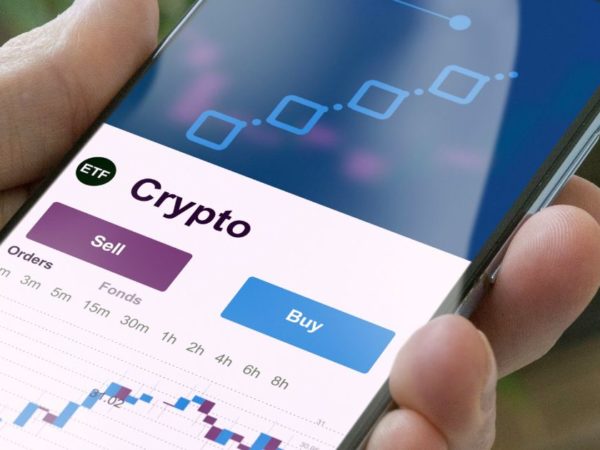Tokenomics consist of major factors that allow you to determine the value of a crypto token.
The demand for cryptocurrency has been rising since the beginning of 2023. Finally, most cryptos started rallying after the negative market sentiments in 2022. Moreover, the global crypto market is valued at over $1 trillion.
Bitcoin, the largest cryptocurrency, gained more than 40% in January 2023. Do you know how crypto is valued? If the answer is no, don’t worry, we’ll discuss it in this article.
For crypto, Tokenomics adds value based on various parameters. But before we get into Tokenomics, we must understand crypto tokens.
What Is a Crypto Token?
A crypto token is a digital token representing various assets such as real estate, securities, or even digital art. Moreover, a token can also represent a specific use on a particular blockchain.
The value of a token is determined by the value of the underlying asset or its use case. Similarly, higher market demand for a token can also increase its price.
Now that you know about a token, let’s dive into Tokenomics.
What Is Tokenomics?
Tokenomics is a combination of “token” and “economics.” Simply put, Tokenomics is the economics of a crypto token.
The initial idea of Tokenomics was proposed by B.F. Skinner, a Harvard psychologist. In 1972, Skinner proposed exchanging tokens among participants with coffee or candy.
Tokenomics is based on the incentive mechanism that rewards people using blockchain networks. This system motivates people to participate in crypto projects that have more reward potential.
In the case of crypto projects, the investors buy and hold tokens they believe in rewarding in the future. The higher the demand for tokens, adds more value to the project and the invested fund.
You might have an interesting question, “How can I check the tokenomics?” Let’s get into that right away!
How to Check the Tokenomics of a Crypto project?
Tokenomics helps you a lot in understanding the structure and design of a crypto token. Here’s how you can understand the tokenomics of crypto projects:
#1. Study the Whitepaper
Most crypto projects publish a whitepaper containing technical specifications and major objectives. Here you can read and have a basic understanding of the complete project.
Also, some projects publish a litepaper, a simplified version of the whitepaper. So, you can read a litepaper to understand without jargon.
Tokenomics consists of an essential part of a whitepaper. You can read all the details related to the token and its functionalities.
#2. Visit Price-tracking Websites
Diving into a white paper and finding the important tokenomics from it can be hectic and time-consuming. If you are in a similar situation, visit genuine price-tracking websites.
You can visit simple platforms like CoinMarketCap or CoinGecko for a quick analysis of a project’s tokenomics. These platforms provide all relevant details in a single go.
Here, the most significant advantage is setting your favorite fiat currency to evaluate the tokenomics of a token. Moreover, you don’t even need to log in to find the token details. Impressive right?
Suppose you look for the tokenomics of the Polygon project’s MATIC token. You’ll find the real-time market cap values and circulating supply.
In addition, you can also find the historical data of the token since its inception. Also, the initial coin offering (ICO) details are available in a single click.
In short, it’s important to check the major components of tokenomics to have better clarity about a project.
Let’s dive straight into it!
Key Components of Tokenomics
#1. Token Supply
The primary factors that impact the price of a token are its demand and supply. You can find three types of supply for a token; circulating supply, total supply, and maximum supply.
- Circulating Supply: This number includes the total number of tokens currently circulating in the crypto market.
- Total Supply: The total supply of a token includes the circulating supply and number of tokens that are mined but are not available on the market. Moreover, the total supply also doesn’t include burned tokens.
- Maximum Supply: This supply consists of the maximum token the project has coded to mine or issue.
In addition, token supply helps to find a token’s crypto market capitalization or market cap. The market cap is calculated by multiplying the token’s current price with its circulating supply.
Let’s suppose a token is trading at $20, and its circulating supply is 10 million. The token has a market cap of $200 million in this case.
Some tokens have maximum supply, like the Cardano project’s ADA token. ADA has a maximum supply of 45 billion tokens. However, tokens of projects like Shiba Inu, Polkadot, and Tether don’t have a maximum supply.
#2. Consensus Mechanism
A crypto project’s consensus mechanism allows the blockchain network to validate and secure each transaction. Most projects use proof-of-work (PoW) or proof-of-stake (PoS) mechanisms.
The PoW mechanism rewards its miners after they complete the validation of the transactions. However, the miners require high-end computing devices to execute the validation process.
Unlike PoW, proof-of-stake mechanisms allow you to verify the network transaction by staking crypto tokens. Therefore, you need to stake tokens for a limited period to obtain rewards.
Most new blockchain projects prefer an environmentally friendly mechanism, so PoW has gained high popularity recently. Ethereum’s shift to a staking mechanism is one of the significant milestones in the crypto industry.
#3. Token Utility
The token utility is the actual use case of a crypto token. The crypto project developers choose their token’s utility based on the project’s mission.
Some tokens allow users to pay transaction fees, while others can be used to buy or sell NFTs. In addition, if you have governance tokens, you can vote for the major decision-making process of a project.
Play-to-earn gaming projects reward their players with tokens. Players can use these tokens to buy in-game items.
For fitness enthusiasts, there are move-to-earn projects that encourage users to exercise. Here you will receive utility tokens as a reward based on your physical activities.
Some projects focus on stablecoins. In this case, the token will be pegged to a fiat currency like the U.S. Dollar. Moreover, the token’s value stays close to the value of the associated currency.
#4. Token Distribution
A large part of the token supply is usually allocated among the founders and investors of a crypto project. So, it is crucial to know the behavior of large holders.
Suppose an individual or an organization with high holdings sells all their tokens. The token’s price can fall or even crash badly in that case.
You can also check if the investors or founders have a minimum lock-in period to sell their tokens. The longer this period, the lesser the risk of enormous selling.
Moreover, token distribution includes the percentage of the total token allocated for marketing. Also, projects allocate a small percentage to the team members. For example, Chiliz crypto projects allocate 5% of their total token supply to the team.
An initial coin offering (ICO) is one of the most preferred ways by crypto projects to distribute their tokens to interested buyers. If you are interested in a project’s vision, you can participate in its ICO.
#5. Token Burns
Burning of a token means the removal of a large number of tokens from its circulation supply. In this case, tokens are transferred to an inaccessible wallet.
Token burn permanently removes the token from its existence. In most cases, the project developers burn tokens to decrease the supply of that particular crypto token.
Binance Coin (BNB) is famous for its token burn process. At the time of writing, the Binance project has burned over 150,000 BNB tokens.
Importance of Tokenomics in Crypto Investment
Tokenomics is one of the important factors investors consider before buying crypto tokens. Tokenomics allows investors to:
#1. Understand Risk
Tokenomics play a crucial role in providing enough fundamental details related to a token. An investor can have a rough risk valuation based on these data.
If you find a crypto project’s token highly risky, you can make an investment decision accordingly. Here you can avoid a risky project or allocate a minimal amount to balance your overall risk exposure.
#2. Find Red Flags
Crypto tokens are listed daily, and it’s difficult to spot bad projects. Here, tokenomics can help you find tokens with bad fundamentals.
For example, suppose you find a token with most of its distribution with a single founder or investor. In this case, it’s better to stay away from investing in that token. Here, a single token holder can crash the token price.
#3. Evaluate the Token’s Value
As we discussed earlier, tokenomics allows us to estimate the market cap of a crypto token. This value helps to compare the token with other tokens with similar market caps.
In most cases, the market cap of the most demanded tokens keeps rising over time. For example, Bitcoin tops the list with a market cap of more than $442 billion.
#4. Determine Future Potential
A well-structured tokenomics model allows investors to determine the capacity of a crypto project to achieve its goal. You can also check the road map on the whitepaper to predict the growth of a project.
Evaluating the potential of a token’s value allows you to consider your investment decision. Simply put, you can stay away from unworthy crypto projects.
Final Words
Tokenomics of a crypto project comes with different valuable data. These data help to figure out the value of a crypto token.
It is not simple to determine the potential of a token by considering a single parameter. For this reason, combining all the parameters mentioned in this article is best for a better token valuation.
Ultimately, do your own research (DYOR) before buying any crypto tokens.
You might also be interested in crypto index funds and ETFs.
![Kirelos Blog Tokenomics: How to Value Crypto the Right Way [2023] Tokenomics: How to Value Crypto the Right Way [2023] Crypto](https://kirelos.com/wp-content/uploads/2023/02/23599/tokenomics-how-to-value-crypto-the-right-way-2023-950x358.png)


